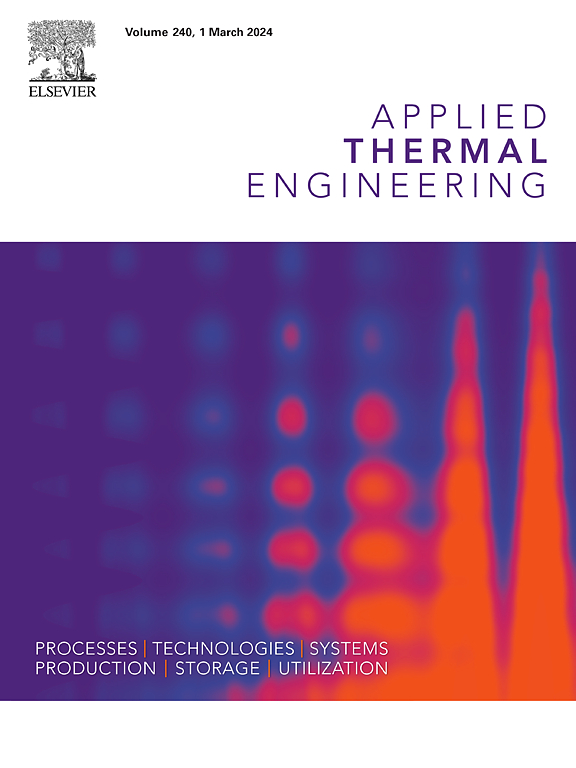Experimental study of photovoltaic-thermoelectric systems using thermal interface materials and natural cooling
IF 6.9
2区 工程技术
Q2 ENERGY & FUELS
引用次数: 0
Abstract
This study investigates a novel approach to enhancing photovoltaic-thermoelectric generator systems by utilizing advanced thermal interface materials in real-world conditions. The research compares two experimental systems under natural air cooling employing different thermal interface materials: one features a pyrolytic graphite sheet, while the other uses conventional thermal grease, alongside a photovoltaic-only system for reference. An Arduino-based data logger accurately monitored key environmental and operational parameters. At peak solar irradiation, the system with the pyrolytic graphite sheet achieved a surface photovoltaic temperature of 39.01 °C, generating 4.90 W and an overall efficiency of 17.95 %. In comparison, the system with thermal grease had a surface photovoltaic temperature of 48.88 °C, generating 4.67 W with an efficiency of 16.87 %, while the photovoltaic-only system reached a surface photovoltaic temperature of 55.37 °C, producing 4.54 W and an efficiency of 16.42 %. The experimental data’s accuracy and reliability were validated against simulations from previous work, revealing error margins between 1.20 % and 3.03 %. These findings underscore the potential of pyrolytic graphite sheets as effective thermal interface materials to significantly enhance the efficiency and power output of photovoltaic-thermoelectric generator systems, offering valuable insights for optimizing renewable energy technologies.
使用热界面材料和自然冷却的光伏热电系统实验研究
本研究探讨了在实际条件下利用先进热界面材料增强光伏热电发电机系统的新方法。研究比较了在自然空气冷却条件下采用不同热界面材料的两个实验系统:一个系统采用热解石墨片,另一个系统采用传统的导热脂,同时还有一个纯光伏系统作为参考。基于 Arduino 的数据记录器可精确监测关键的环境和运行参数。在太阳辐照峰值时,使用热解石墨片的系统的光伏表面温度为 39.01 °C,发电量为 4.90 W,总效率为 17.95 %。相比之下,使用导热脂的系统的表面光电温度为 48.88 °C,发电功率为 4.67 W,效率为 16.87 %,而纯光电系统的表面光电温度为 55.37 °C,发电功率为 4.54 W,效率为 16.42 %。实验数据的准确性和可靠性与之前的模拟结果进行了验证,结果显示误差范围在 1.20 % 到 3.03 % 之间。这些发现强调了热解石墨片作为有效热界面材料的潜力,可显著提高光伏热电发电机系统的效率和功率输出,为优化可再生能源技术提供了宝贵的见解。
本文章由计算机程序翻译,如有差异,请以英文原文为准。
求助全文
约1分钟内获得全文
求助全文
来源期刊

Applied Thermal Engineering
工程技术-工程:机械
CiteScore
11.30
自引率
15.60%
发文量
1474
审稿时长
57 days
期刊介绍:
Applied Thermal Engineering disseminates novel research related to the design, development and demonstration of components, devices, equipment, technologies and systems involving thermal processes for the production, storage, utilization and conservation of energy, with a focus on engineering application.
The journal publishes high-quality and high-impact Original Research Articles, Review Articles, Short Communications and Letters to the Editor on cutting-edge innovations in research, and recent advances or issues of interest to the thermal engineering community.
 求助内容:
求助内容: 应助结果提醒方式:
应助结果提醒方式:


